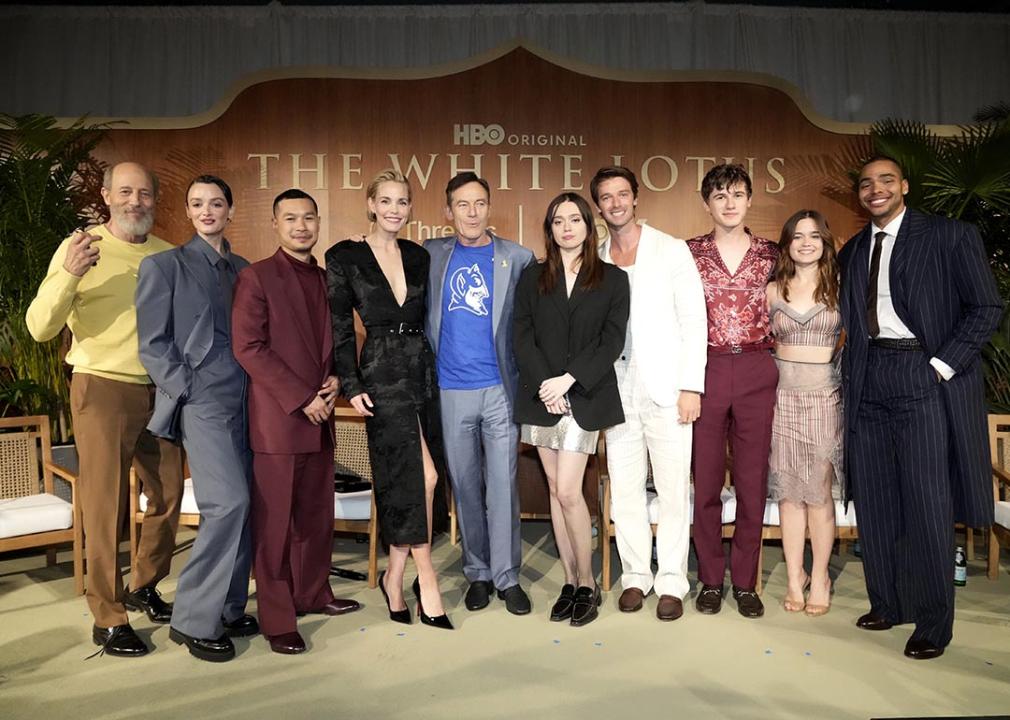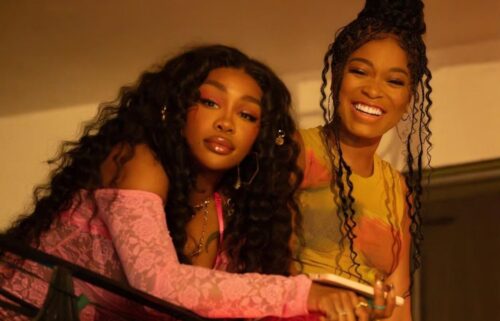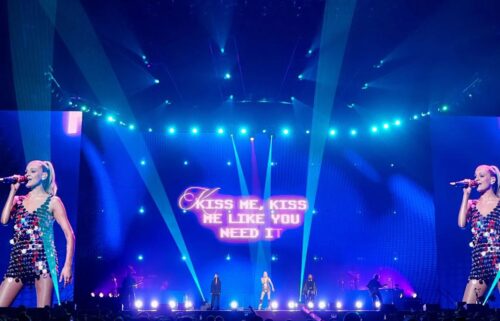'The White Lotus' effect: How HBO's hit series is redefining travel, style, and brand strategy

Jeff Kravitz // FilmMagic for HBO
‘The White Lotus’ effect: How HBO’s hit series is redefining travel, style, and brand strategy
Since its debut, “The White Lotus” has quietly built a world that audiences don’t just watch—they want to live in. Its sun-drenched beaches, tangled characters, and simmering tension have struck a cultural chord, turning HBO’s hit into more than just entertainment. It’s become a mood, a vibe, a version of luxury that feels both relatable and out of reach.
Viewers don’t just want to vacation like they’re at the White Lotus—they want to dress like the characters, eat what they eat, and bring that same aesthetic into their homes. And brands are responding. From fashion and food to beauty and home design, companies are channeling the show’s atmosphere into curated products and immersive experiences that feel straight out of the script.
So how did a sharp satire on privilege become a roadmap for selling modern luxury? It’s a question with bigger implications—for branding, for culture, and for the way desire is being designed. Compartés takes a closer look.
Why ‘The White Lotus’ Works for Brands
For decades, movies and television have quietly blurred entertainment with advertising. For example: Jim Carrey’s charmingly oblivious character in “The Truman Show,” unwittingly endorsed everything from Fiji Water to kitchen appliances, satirizing consumer culture’s fixation with products woven into daily life.
Ironically, the film’s critique did little to diminish the audience’s interest in the brands featured. Rather, people simply smiled and bought the products anyway. But something subtler—and perhaps even smarter—is happening with HBO’s “The White Lotus.”
Unlike “Truman’s” forced endorsements, “The White Lotus” effortlessly draws viewers into a world that brands are eager to join. Instead of overt product placement, the show has created an environment that naturally captures consumer attention. Here’s exactly why it works:
Escapism and Luxury That Feels Real
Every season drops us into a different postcard: a Hawaiian resort, a Sicilian palace, and most recently, a secluded sanctuary in Thailand. But the fantasy isn’t just about travel—it’s about stepping into a version of life where time slows, money flows, and the problems are beautifully dressed. Even as characters unravel, the setting stays pristine.
For brands, that backdrop is priceless. Whether it’s a linen suit, a silk robe, or a designer bag peeking from a suitcase, the environment makes each item feel like part of a curated escape—and consumers want in.
Irony and Commentary on Class
One of the show’s biggest strengths is how openly it mocks the habits and hang-ups of the ultra-wealthy, even as it celebrates their lavish lifestyle. Tanya, played brilliantly by Jennifer Coolidge, perfectly illustrates this contradiction—her extravagant outfits, clueless decisions, and emotional vulnerability poke fun at privilege without ever losing empathy.
Similarly, Season 2’s Harper and Ethan awkwardly navigate the pitfalls of newfound wealth at a luxurious Sicilian resort, highlighting how uncomfortable—and absurd—elite behavior can sometimes be. They know the behavior is cringe, but the lifestyle remains compelling. That’s the sweet spot for brands—luxury that doesn’t require perfection, just proximity.
Audiences today appreciate brands that recognize this irony, finding humor in excess while still offering access to an irresistible lifestyle.
Visual Storytelling
“The White Lotus” doesn’t just show beautiful visuals—it carefully builds an emotional experience through every scene. Each setting, outfit, and small detail subtly tell us something deeper about the characters and their worlds. Harper’s sleek, polished wardrobe reveals her controlled personality, while Tanya’s wildly extravagant dresses and oversized hats hint at both her wealth and underlying insecurities.
With Season 3’s new backdrop in Thailand, featuring vibrant markets, serene temples, and glittering resorts, viewers are once again pulled into an immersive world that sparks curiosity and desire.
Unlike traditional advertising, “The White Lotus” never pushes products into your face. Instead, it quietly allows them space within each moment: sandals resting casually beside a shimmering pool, sunglasses perched delicately at brunch, or an espresso cup nervously trembling during tense conversation.
The camera pauses just enough to ignite curiosity and imagination. You start wondering—”Where are those shoes from?” “Where can I buy that exact cup?” This subtlety is exactly why the show’s visual storytelling is so effective for brands. It doesn’t interrupt the story; it enhances it, seamlessly inviting products to become a natural and emotional part of the viewer’s journey.
Aspirational (but Self-Aware) Aesthetics
Yes, “The White Lotus” offers a fantasy filled with money, beauty, and luxurious escapes—but beneath its polished surface lies a refreshingly awkward truth. The characters, wrapped in their flowy resort dresses and designer sunglasses, are deeply flawed, often lonely, and painfully relatable.
Tanya, stumbling emotionally through extravagant yacht outings, Harper anxiously navigating chic cocktail hours, or Portia frantically assembling outfits in a chaotic Gen-Z blur—each moment is luxurious, but never flawless. The glamour comes with quiet dysfunction, awkward silences, and midlife uncertainties. And that, ultimately, is why the aesthetic feels authentically modern.
Brands thrive in this delicate space precisely because it isn’t perfect. It’s luxury with an honest, relatable edge. By acknowledging awkwardness and vulnerability alongside beauty and wealth, the show creates a uniquely inviting atmosphere for products—aspirational enough to inspire desire, yet real enough to feel approachable.
Tanya’s wild accessories don’t belong on pristine showroom shelves; they belong scattered on hotel-room floors, tangled in genuine emotion. Daphne’s carefully curated “unbothered” vibe is appealing precisely because viewers sense the hidden complexities beneath her flawless façade.
This nuanced balance between aspiration and self-awareness offers brands something truly rare: the chance to position their products as human rather than simply luxurious. The show doesn’t directly sell; it quietly draws us into its captivating, slightly imperfect world. And in a culture saturated with aggressive marketing, this subtlety—this comfortable tension between the desirable and the relatable—becomes the most compelling sell of all.
Why These Collaborations Work
Now, what’s particularly interesting isn’t that these brands are following “The White Lotus” trend—it’s how they’re translating it. They’re not just riding the wave; they’re interpreting the show’s nuanced tone, holding up a mirror to its contradictions, and quietly saying, “We see it too.” Because “The White Lotus” isn’t really about luxury resorts. It’s about what unravels once the Aperol wears off.
At the core is a shared fluency in irony and aspiration. Brands like Bottega Veneta and Etro understand that luxury today isn’t loud—it’s layered. Their alignment with the show’s self-aware tone allows them to offer goods that feel aspirational without trying too hard. They’re not selling perfect lives. They’re selling the performance of one—and consumers get the joke.
That emotional intelligence also shows up in the styling. Harper’s neutrals, Tanya’s baroque drama, Portia’s chaos-theory wardrobe—they all tell stories. Brands are borrowing those cues, building products that hint at a character’s arc. It turns merchandise into narrative, and narrative into desire.
This is why limited drops and immersive marketing seal the deal. It’s not just about owning a product—it’s about participating in an experience. Whether it’s scenting your home like Casa Amalfi or sipping something bittersweet like Chinotto Neri, the aesthetic is cohesive.
Nothing feels random. Every detail is intentional, designed to reflect a world where style is curated, not chaotic—even when the people inside it are. And that matters, because luxury is emotional. These purchases aren’t driven by utility—they’re about identity, about feeling seen, or at least styled, in a world that feels increasingly off-script.
Bottom line: These brands understand that “The White Lotus” isn’t selling paradise—it’s exploring the fallout. That’s what makes it relatable. And somehow, that makes it even more seductive.
The Business of Aesthetic Association
You can trace “The White Lotus” phenomenon clearly into something marketers quietly call the business of aesthetic association. It’s not about slapping a logo onto a luxury handbag or hiring a celebrity influencer—it’s far more subtle, nuanced, and rooted deep in human psychology.
Brands know our brains aren’t wired for logic alone; they’re wired for connection. They understand we’re not buying products—we’re buying the feeling those products give us.
Psychologically speaking, aesthetic association leverages our innate need for identity and belonging. In fact, neuroscience research shows that the human brain responds powerfully to imagery and narratives because we process stories emotionally rather than rationally.
When a product aligns seamlessly with a narrative we already identify with, our brains experience something psychologists call “self-congruence”—a perfect alignment between who we are and who we want to be. This makes us more receptive to the products that speak this same visual and emotional language.
Fashion, wellness, and decor brands are experts at packaging products as lifestyle narratives:
- Clothing isn’t merely functional; it embodies an identity you adopt when you wear it.
- Skin-care routines become rituals of self-care, delivering moments of peace and reassurance.
- Furniture and decor aren’t simply items; they’re expressions of personal style and taste—extensions of our psychological comfort zones.
It’s a simple yet devastatingly effective formula: first comes the vibe, that intangible but instantly recognizable mood. Then comes the story, crafted and narrated through products that embody that vibe. And from there, inevitably, comes the sale—because once people emotionally connect to a mood, they’re far more likely to buy into the narrative.
Ultimately, aesthetic association thrives because it delivers precisely what consumers deeply crave: belonging, meaning, and just enough aspiration to keep things interesting. And in our complicated relationship with luxury—a realm “The White Lotus” has brilliantly tapped into—this method isn’t just smart. It’s irresistible.
Travel as a Supporting Storyline
Perhaps the most fascinating part of all this isn’t the dazzling resorts or messy drama—it’s how these real-world locations become characters in their own right. “The White Lotus” does more than showcase beautiful settings; it creates powerful emotional connections, turning viewers into travelers eager to experience the show’s distinctive vibe firsthand.
This phenomenon, often called “set-jetting,” occurs when people pick their next vacation spot because they’ve seen it featured in films or TV.
It’s a simple yet powerful idea—watching Tanya stroll awkwardly through a Maui resort or Harper navigate uncomfortable Sicilian dinners makes us crave those exact experiences ourselves. And the impact is measurable: after Season One aired, travel interest in Maui surged by 300%, while hotels in Sicily sold out quickly following Season Two.
Thailand took notice early. Ahead of Season Three, the country embraced a forward-thinking tourism strategy—one driven by careful research, authentic local experiences, and a strong commitment to sustainability.
Rather than just promising postcard-perfect beaches, they focused on the genuine culture and community experiences travelers increasingly seek out. It’s a smart, strategic approach to attracting visitors who want meaningful trips, not just pretty photos.
Even without official tie-ins, travel brands can use similar storytelling techniques to craft emotionally resonant experiences. They’re discovering that making travel feel cinematic—full of emotion, authenticity, and depth—resonates deeply with modern travelers.
At its core, this trend reflects a truth about travel today: We’re not just looking for luxury—we’re looking for stories we can live ourselves.
What Other Brands Can Learn from ‘The White Lotus’ Playbook
Now, it’s not a stretch to say “The White Lotus” has become a masterclass in cultural relevance. Not because it sells a product—but because it tells a story that people can’t stop watching, quoting, or, in some cases, booking flights around. That’s the power of narrative-driven marketing—and it’s a playbook that more brands are starting to study more closely.
First, always start with a story, not just a product
What “The White Lotus” brilliantly demonstrates is that any object—an outfit, a cocktail, even a chocolate bar—can become emotionally meaningful when embedded in a compelling narrative.
From Tanya’s extravagant chaos to Harper’s controlled elegance and Portia’s Gen Z maximalism, the show’s characters aren’t merely fictional beings—they’re vivid mood boards.
Smart brands tap directly into these identities, mirroring their audience’s internal desires through style, tone, and aesthetic choices. It’s less about chasing fleeting trends and more about authentically reflecting consumers’ emotional worlds.
Use scarcity and aesthetics thoughtfully
Limited editions, bold visuals, and cohesive design aren’t just about looking good—they create anticipation and drive urgency/action. Exclusivity works not because it tricks people, but because it signals value.
Human psychology is simple: We’re wired to desire what feels rare, especially when it’s tied to something meaningful or culturally relevant. It’s not manipulation—it’s resonance.
Finally, brands must actively join the conversation—not just appear in the background
As one observer aptly noted, “Luxury brands are tapping into “The White Lotus” aesthetic to share in this pop culture moment—giving consumers a tangible way to connect with the otherwise unattainable lifestyle the show so artfully depicts.” Savvy marketers don’t merely show up; they foster communities where fans can debate, dissect, and engage deeply with the narrative.
Ultimately, the most successful brands aren’t simply riding a cultural wave—they’re thoughtfully participating in stories people are already passionately invested in.
Closing Reflection: Satire Meets Sales
Who would’ve guessed that a sharply satirical show about rich people’s messy vacations would turn into a cultural and commercial phenomenon? Yet, here we are.
What “The White Lotus” captures so well isn’t just wealth—it’s human nature. We see ourselves in these characters: the chaos, the contradictions, the insecurities hiding behind designer sunglasses. It’s messy, familiar, and oddly comforting.
The show holds up a mirror and confirms what many quietly feel—that it’s okay to crave beauty, comfort, and yes, even a little extravagance, without apology. And while most of us won’t be jetting off to a private villa in Thailand, there’s something satisfying about bringing a piece of that world home—through the clothes, the scent, the chocolate, the story.
For brands that get it, this is where satire meets sales. They’re not just chasing trends—they’re embracing the irony, the aspiration, and the emotional honesty that makes “The White Lotus” hit so hard. They’re selling the fantasy while winking at the truth behind it.
Because ultimately, the most powerful marketing doesn’t feel like marketing at all. It feels like recognition. And “The White Lotus” doesn’t just recognize its audience—it implicates us, entertains us, and keeps us wanting more.
This story was produced by Compartés and reviewed and distributed by Stacker.
![]()



